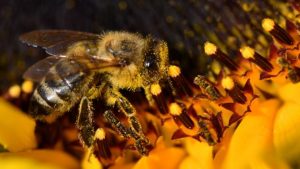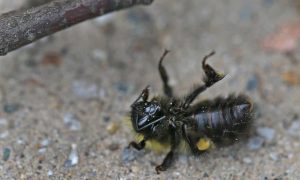August 30, 2019
Today’s class began with Tabitha’s LA in the News presentation. Her topic was the recent announcement made by members of FARC (Fuerzas Armadas Revolucionarias de Colombia or Revolutionary Armed Forces of Columbia). Tabitha explained the deep tensions between the Columbian government and FARC and why the two forces are now, once again, in such an openly hostile relationship. Tabitha’s article also brought up the interesting dilemma that members of FARC and other armed revolutionary groups face in Columbia and other South American countries. For many fighters who have fought for decades, and sometimes all of their lives, rejoining society can be a long and difficult process. Tabitha also mentioned that the article failed to adequately capture the position of the Columbian government and its side of the story.
After Tabitha’s presentation, Dr. Holt introduced the primary sources essay, which will be due on Friday, September 13. The class then split into small groups to discuss the reading about José Carlos Mariátegui that was due in class that day. My group noted that Mariátegui’s Wikipedia page was particularly well curated and that his opinions on the differences between South American socialism and European socialism were incredibly insightful and that they have certainly impacted future socialist movements in Central and South America.
Historical Skills and Questions for Consideration
- Connecting the ideas of historical figures to their modern interpretations.
- How influential was José Carlos Mariátegui?
- Why is he still so important today?
- Why was socialism is Central and South America different from European socialism?
Transcribed Passage: Mariátegui’s Exile
After being exiled from Peru, Mariátegui traveled throughout Europe where he rubbed shoulders with various socialists and prominent people, including Benito Mussolini. His time in Europe gave him not only a better understanding of European socialism and why he believed it would not be the correct type of socialism for Peru, but also the dangers of what he claimed to be the failings of socialism. Namely, the rise of fascism. (It should be noted that he believed these groups rose up when socialists failed to band together, not that socialism itself had somehow failed.) After returning to Peru in 1921, Mariátegui was firmly in support of Latin American Socialism.
Key Terms
José Carlos Mariátegui: a Peruvian intellectual, sociologist, writer, political philosopher, and communist. He is considered to be one of the most influential Latin American socialists of the 20th century.
Latin America Marxism: a variety of Marxism that focuses on the agricultural sector rising up as the working class rather than, as in the European model, the factory worker. Latin American Marxism shares more traits with Maoism than traditional European Marxism.
Indigenista Literature: literature that focuses on the relationship between indigenous peoples and the indigenous state. In particular, this writing has been used as either its own political ideology or in tandem with another political ideology in various Latin American countries.
Links
- An analysis of recent attempts at socialism in different countries in Latin America: https://truthout.org/articles/what-happened-to-latin-americas-socialism/
- More on Bolivia’s indigenous movement: https://www.worldpoliticsreview.com/trend-lines/19601/bolivia-s-indigenous-movement-sees-advances-and-divisions-under-morales
- A more in-depth look at the various guerrilla groups in Columbia: https://www.unric.org/en/colombia/27013-the-guerrilla-groups-in-colombia
- A further exploration of the conflict between the Columbian government and FARC: https://providencemag.com/2017/12/colombia-and-the-farc-problems-with-creating-peace/
Examination Questions
- What steps, if any, could be taken by the Columbian government, and other governments struggling with the same issue, to ease the transition between militant and civilian for members of guerrilla groups such as FARC?
- Does the existence of varying types of socialism strengthen or weaken the cause of a world revolutionary?
- Is it possible that the different countries in the same region of the world require different types of socialism? If so, why? (For example, Columbia vs Venezuela, Chili vs Argentina, etc.)








